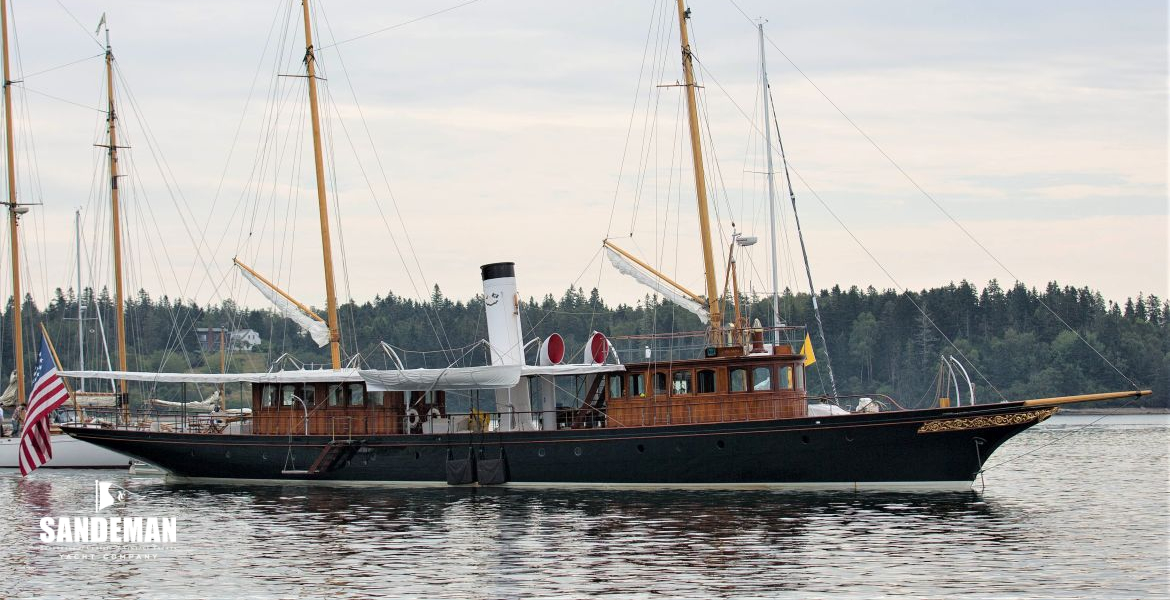
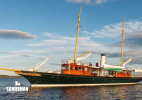
![At anchor; launch alongside [Cathy Mansfield]](https://images.sandemanyachtcompany.co.uk/uploads/boats/142x100_618_1200630311614b6da5b3800.jpg)

![Mothership [Cathy Mansfield]](https://images.sandemanyachtcompany.co.uk/uploads/boats/142x100_618_1221249926614b6da4bcf4c.jpg)
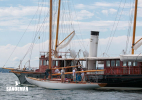
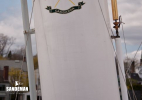
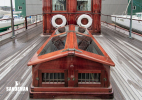
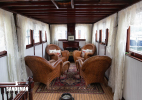

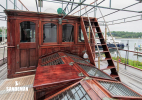
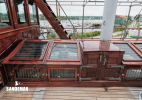
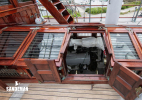
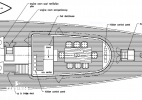
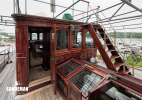
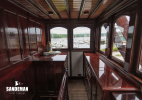
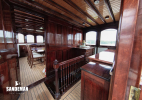
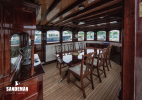
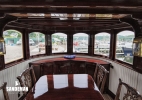
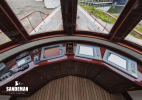
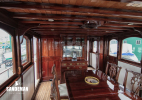

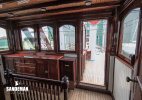
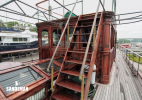
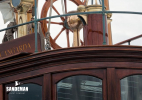
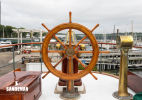
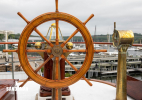
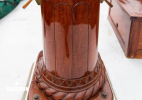
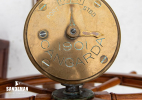
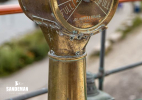
![Owner and guest cabins plan [after cabin now double and single]](https://images.sandemanyachtcompany.co.uk/uploads/boats/142x100_618_12696926796132687166ae1.JPG)
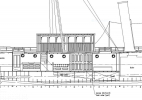
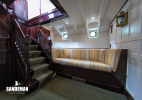
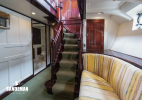
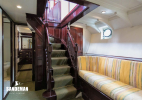
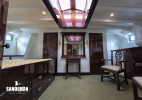
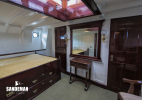
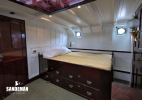
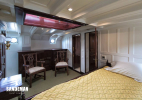

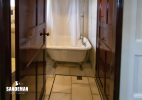
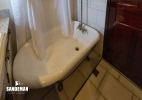
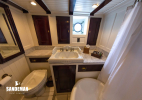

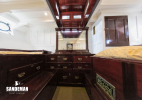
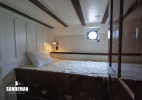
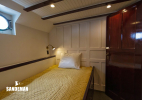
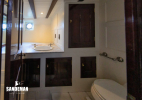
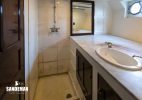
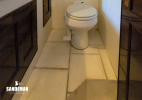
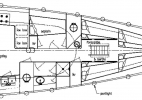


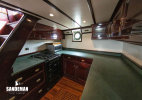
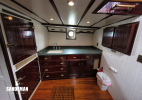
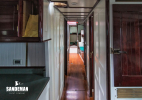
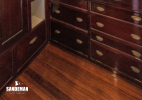
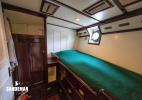
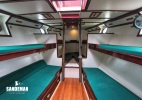
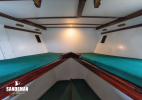
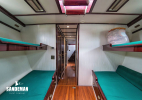
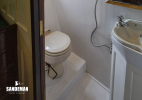
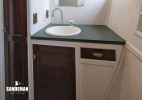
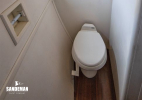
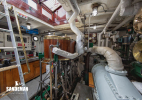
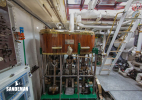
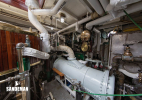
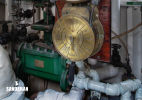
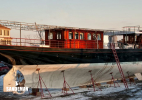
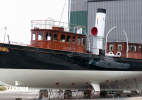
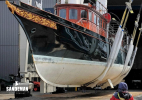
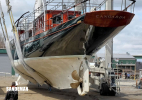
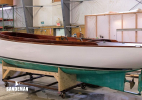

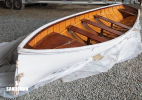
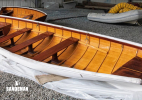
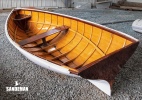
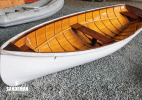
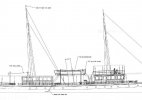
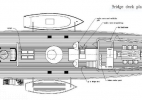
![Fitting out, Pusey & Jones 1901 [Courtesy of the Hagley Museum and Library]](https://images.sandemanyachtcompany.co.uk/uploads/boats/142x100_618_1006030847614b5fa62cf9a.jpg)
| Designer | H.C. Wintringham |
|---|---|
| Builder | Pusey & Jones Co., Wilmington, USA |
| Date | 1901 |
| Length overall | 138 ft 0 in / 42.06 m |
| Length deck | 126 ft 0 in / 38.4 m |
| Length waterline | 105 ft 0 in / 32 m |
|---|---|
| Beam | 17 ft 6 in / 5.33 m |
| Draft | 7 ft 9 in / 2.36 m |
| Displacement | 120 Tonnes |
| Construction | Steel |
| Engine | Sullivan triple-expansion steam |
|---|---|
| Location | USA |
| Price | Sold |
These details are provisional and may be amended
CANGARDA may be unique: an obviously gorgeous, fully functioning Edwardian era private pleasure steam yacht of significant size and undoubted provenance. Her rebuild and restoration led by Bob McNeil and executed by Jeffrey Rutherford, completed in 2009, was painstaking in its combination of authenticity with practicality and capability. Apart from all those superlatives, CANGARDA is an easily and economically driven steam yacht, powered by her original steam engine and its associated auxiliaries. That so much of her original carpentry could be re-used in the entirely faithfully rebuilt hull ensures that 21st Century owners can very comfortably, safely and practically live and cruise in this most amazing and admired, beautiful time machine.
Interested in CANGARDA in more detail.
“Sometimes it is not that people find boats but rather that the boat finds an owner. Most of this is not particularly rational. All the above applies here. Originally shown as a proposed project in the summer of 2002, it was not until the Herreshoff Rendezvous of that year that the “bug” bit. For some reason the idea of restoring CANGARDA really sunk in.”
Robert G. McNeil, 2006
The rebuild and restoration of CANGARDA was informed by two principal sources of information, and, as in all the best such undertakings, a clear and ambitious vision for how the vessel would be used post restoration, including open sea passage making.
The sources were:
1. The existing Pusey & Jones plans preserved at the Hagley Museum, Wilmington, Delaware
These records are very fragmentary, containing many small scale plans. Scans of these drawings formed the basis for new drawings prepared by Andrew Davis’s Tri-Coastal Marine to satisfy Coast Guard and ABS requirements.
2. The plethora of photographs from the Fulford Museum, Brockville, Canada
And pictures taken and provided by earlier owner/ restorer/ preserver Richard Reedley, and others.
Significant effort was made to keep the restored CANGARDA like original by using every part from the original vessel found in storage while mindful of the open sea requirement and subject to all the elements that implies. To make the vessel safely operable, while the steam engines and many of the original valves, sight gages and pressure sensors were restored for re-use, a new oil (rather than coal) fired boiler was constructed, and the operation is automated so that no human is required to be constantly in the engine room during operations. Other than this, the design and outfitting of the engine room is as close to the original as possible. The original electric panel and gauges were installed. The engine room telegraph system and the steam anchor windlass – and the anchor itself - are the originals.
Much of the vessel’s original woodwork and fittings, having been carefully stored under earlier ownerships could be re-used, involving often a fascinating process something akin to assembling a complicated jigsaw puzzle without the box’s cover picture. The project’s key carpenter was able to find panels that fitted the exact structure of the cabins, even to the extent he was able to show how one tree was used in sequential pieces placed in the after cabin. Studiously determining how each piece, a panel or a small part of the mouldings, was utilized has added to the authenticity of the restoration.
The accommodations were constructed in the original configuration. Sinks in the cabins as well as the water valves are original. Lock sets, hinges, pin rails, handrail parts, bulwarks, bunk faces and drawers and a long list of other items are all original.
Of course there are always compromises in such work – for example, CANGARDA has full modern navigational and communication aids (all of which can be concealed when she is dockside). However, if Charles Canfield or George Fulford walked the decks they would not see many apparent changes to the vessel they enjoyed so much.
CANGARDA was originally built in 1901 by Pusey and Jones of Wilmington, Delaware (in the amazing time of five months or less) for Michigan ‘lumber baron’ Charles Canfield - named as a combination of his last name, and that of his wife, Belle Gardner. After a short first ownership, CANGARDA was sold to George Fulford of Brockfield, Ontario, a wealthy businessman and member of the Senate of Canada.
The Fulfords renamed the boat MAGEDOMA, a combination of syllables from the names of his wife and children (MAry, GEorge, DOrothy, MArtha). The boat was docked at Fulford Place, the Fulfords’ mansion nestled on the banks of the St. Lawrence River in Brockville, Ontario. The house exists today as the Fulford Museum.
Even though George Fulford was killed in an automobile accident in 1905 (the first Canadian to die by such a means) the family cruised MAGEDOMA for twenty years in the Thousand Island area of Lake Ontario. She was a well-known and majestic yacht in these waters. In 1927, Mary Fulford hosted on board the then Prince of Wales, his brother Prince George (later Duke of Kent), and the prime ministers of Britain and Canada, Stanley Baldwin and William Lyon Mackenzie King respectively.
At the time of World War II the Fulfords donated the vessel to the Canadian Navy.
In 1951 MAGEDOMA was sold to Cameron Peck, who used the vessel until 1954 when she was sold to Frederick Smith. It was Smith who restored the original name of the vessel, CANGARDA. In 1983 CANGARDA was sold to Richard Reedley, who began a major restoration. She was disassembled, the engines sent to England for restoration, and the wood panelling including all the parts put in storage.
Unfortunately, after making repairs to the hull, Mr. Reedley was unable to complete the restoration. The hull was placed back in the water and left for some ten years after which time she sank in 1999. A rescue was undertaken by Elizabeth Meyer of J Class Management and the hull then lay on the hard at Fairhaven, Massachusetts with the engine and woodwork in store.
This was CANGARDA’s status in 2002 when she found her eventual saviour, the late Bob McNeil. The rebuild/ restoration detailed above by Rutherford’s Boat Shop, Richmond, California, began in 2004 and was completed in 2009.
- Welded steel hull on steel frames (new at launching 2009)
- All work inspected by USCG and classed by ABS
- Teak laid deck on plywood substrate over steel deck beams (new at launching 2009)
- Cuban mahogany deck houses and carpentry (mostly original, restored)
Aft Deck
- Lazarette hatch
- 1 x Skylight
Aft deckhouse
- Deck saloon [originally designated “smoking lounge”]
- Companionway to lower accommodation
- 1 x Skylight
Mid deck
- Funnel
- 2 x Large cowl engine room ventilators
- Boat davits/ chocks
- Engine room companionway/ skylights
Forward Deck
Forward deckhouse
- Companionway lobby/ navigation area
- Dining saloon
- 1 x Table
- 8 x Chairs
Open bridge over
- Traditional ship’s wheel
- Binnacle
- Engine room telegraph
- Spotlight
- Fo’c’sle companionway hatch
- Steam windlass
- Forepeak hatch
Aft lower accommodation
- 2 x Double staterooms
- 1 x Queen stateroom
- 1 x Double berth + single berth stateroom
- 1 x WC/ Shower in master cabin
- 1 x WC/ Shower in corridor
Forward lower accommodation
Galley with stove, refrigerator and freezer
- 2 x Refrigerators
- 1 x Freezer
- 1 x 4-Burner gas stove
- 2 x Electric ovens
Captain’s cabin
- Double berth
Crew quarters
- 1 x WC
- 1 x Shower compartment
- 8 x Crew bunks
- All bedding (pillows, sheets, quilts) included with vessel
Mechanical
- Sullivan Triple-expansion steam engine (the original, rebuilt)
- Forced-draft oil-fired boiler (new at rebuild)
- Original condenser reconditioned for use
- 6 x Steam auxiliary engines (the originals, rebuilt) for:
- Engine water circulation, bilge pumping and anchor windlass
- Steam anchor windlass (original reconditioned at rebuild)
Generators:
- Mastervolt whisper 20 kW (Serial #UN0A0009)
- Mastervolt whisper 30 kW (Serial #UN06A0005)
Other
- Trim and stabilizer tabs (new at rebuild)
Electrical
- TBA
Tankage
- Diesel: 5,256 US Gallons / 19896 L
- Potable water: 349 US Gallons / 1321 L
- Boiler feed water: 540 US Gallons / 2044 L
- ‘Hot Well’ tank for recycling water from condenser
- Black water: 257 US Gallons / 973 L
- Grey water: 279 US Gallons / 1056 L
Rig
‘Schooner rigged steam yacht’
- Hollow Sitka spruce mainmast with gaff
- Hollow Sitka spruce foremast with gaff
- Hollow Sitka spruce bowsprit
Sails
- Gaff loose-footed mainsail
- Gaff loose-footed foresail
Canvaswork
- White canvas deck awning
- TBA
Bilge Pumping
- Via steam auxiliary or electrical back-up
Liferafts
- 2 x 8-Person USCG approved
Lifeboats:
2 x Whitehalls
1 x Motorized launch
- Accommodation ladder
Main image: Benjamin Mendlowitz
- Other colour images: John Williams unless stated otherwise
- Fitting out 1901: Courtesy of the Hagley Museum and Library
Contact us to discuss CANGARDA in more detail.
These particulars have been prepared from information provided by the vendors and are intended as a general guide. The purchaser should confirm details of concern to them by survey or engineers inspection. The purchaser should also ensure that the purchase contract properly reflects their concerns and specifies details on which they wish to rely.